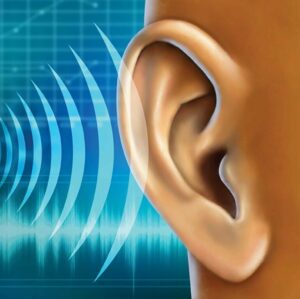The month of October is National Protect Your Hearing Month. It’s great to have this important safety issue brought to our attention, but the damage from excess noise in our work and even in our entertainment choices happens 24/7/365.
How Loud is Too Loud?
The National Institute on Deafness and Other Communication Disorders points out that hearing loss can happen when long or repeated sounds at or above 85 dBA (A-weighted decibels) is experienced. To put that into perspective, here’s how some familiar sounds rate.
- Normal Conversation: 60-70 dBA
- Movie Theater: 74-104 dBA
- Motorcycles: 80-110 dBA
- Music via headphones, sports events, concerts: 94-110 dBA
- Sirens: 110-129 dBA
- Fireworks Show: 140-160 dBA
From this list you can get a good idea of the level of noise we’re exposed to on a regular basis primarily with our entertainment choices. But it’s a whole new game when we’re in the workplace.
OSHA Hearing Protection Standards
That 85 dBA comes directly into play through OSHA standards that a hearing conservation program be implemented when workers are exposed to “a time-weighted average noise level of 85 dBA or higher over an 8-hour work shift.” That’s the standard for the general industry. For construction workers, the noise level can rise to 90 dBA before a conservation program is required.
It’s important to note that as noise levels rise, the amount of exposure allowed drops sharply. The recommended exchange rate is for every 3 dBA increase, the exposure time drops by half. For example, an 88 dBA noise environment, 3 dBA above the 85 dBA requirement, would allow only a 4-hour exposure.
Noise Exposure Defenses
There are three layers of defense against excessive noise exposure.
- Engineering Controls. This involves reducing noise levels through selecting quieter equipment or installing mufflers, putting in place noise absorbing panels and even placing equipment in a soundproof room.
- Administrative Controls. This includes reducing the amount of time an employee is exposed to high noise levels either through reduced hours or moving work to other quieter areas throughout the workday. Frequent breaks in noise free rooms can help as well.
- Hearing Protection Devices. Earplugs, earmuffs or both can be used to protect workers in high noise environments.
OSHA Noise Protection Requirements
Once noise levels are above that 85 dBA threshold, OSHA requires the following as part of your hearing conservation program.
Monitoring
Any type of noise exposure above 80 dB, whether that’s intermittent or continuous, must be measured during a typical work setting. OSHA further requires regular calibration of the measuring devices. Whenever changes occur in the work based on process, equipment or controls, the monitoring must be repeated. Employees must also be allowed to monitor the procedures and be notified of the results.
Audiometric Testing
You’ll need to maintain a regular program of testing that includes a baseline test within six months of an employee’s first exposure to noise. That needs to be followed by annual testing to see if any hearing loss has been experienced. The tests need to be free of charge to the employee and conducted by an audiologist or physician.
Hearing Protection
Employers need to provide at least one variety of earplugs and one variety of earmuffs, free of charge. The noise reduction rating (NRR) must be sufficient to provide the needed protection. Plus, you’ll need to ensure that every employee is fitted correctly to attain the needed noise attenuation level.
Training
Annual training must address the effect of noise on hearing, the purpose and proper use of hearing protectors, instructions on fitting and care along with reasons behind audiometric testing and the test procedures themselves. While annual training is the requirement, it’s best to take advantage of every opportunity to reinforce the training including during annual testing and routine checks by supervisors on the use of hearing protection.
Recordkeeping
With any OSHA program, there are significant record-keeping requirements. In this case, they include recording audiometric test results and keeping them on file for as long as the employee is on the payroll. Noise exposure measurements must be kept for two years. You’ll also need to record any work-related hearing loss cases.
Return on Investment in Safety — Prevention Pays Off
You’ve heard us talk many times about ROI and that prevention pays off. Here’s a couple of significant numbers to help back up our focus on safety and its return on investment. The CDC states that 22 million workers are exposed to hazardous noise each year. Out of those workers, OSHA estimates that $242 million is spent annually on worker’s compensation for hearing loss disability.
Make sure you’ve done all you can to protect your workers, whether that is with hearing protection or any other hazard they face in the workplace.
We Can Help All Your Workplace Safety Issues
Connect with us to learn more about our workplace safety services and speak with a safety consultant who can help you achieve your safety goals.
We offer free initial phone consultations. Call 763-417-9599, email us at info@oecscomply.com, or complete our contact form and we’ll be in touch.
 763.417.9599
763.417.9599
